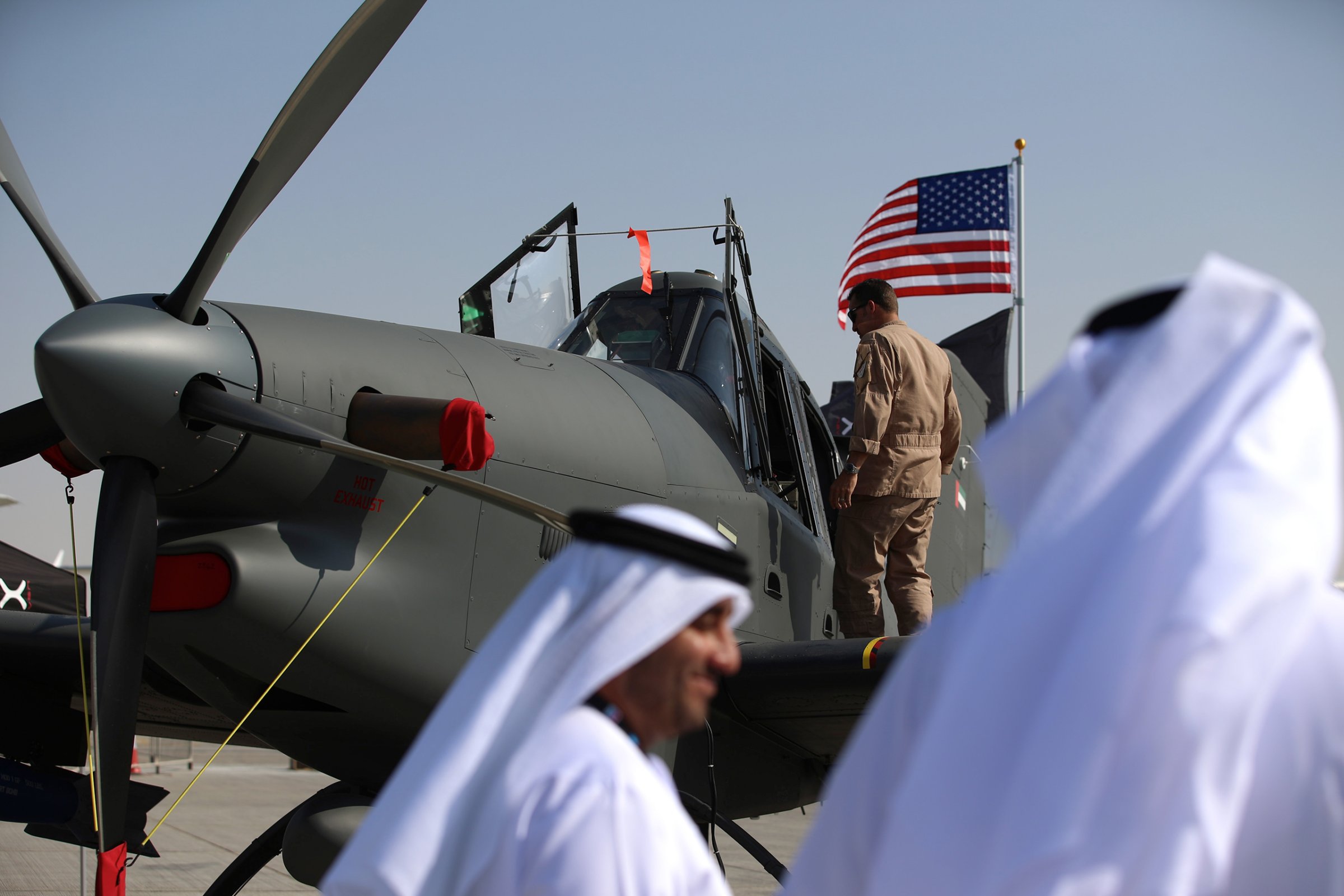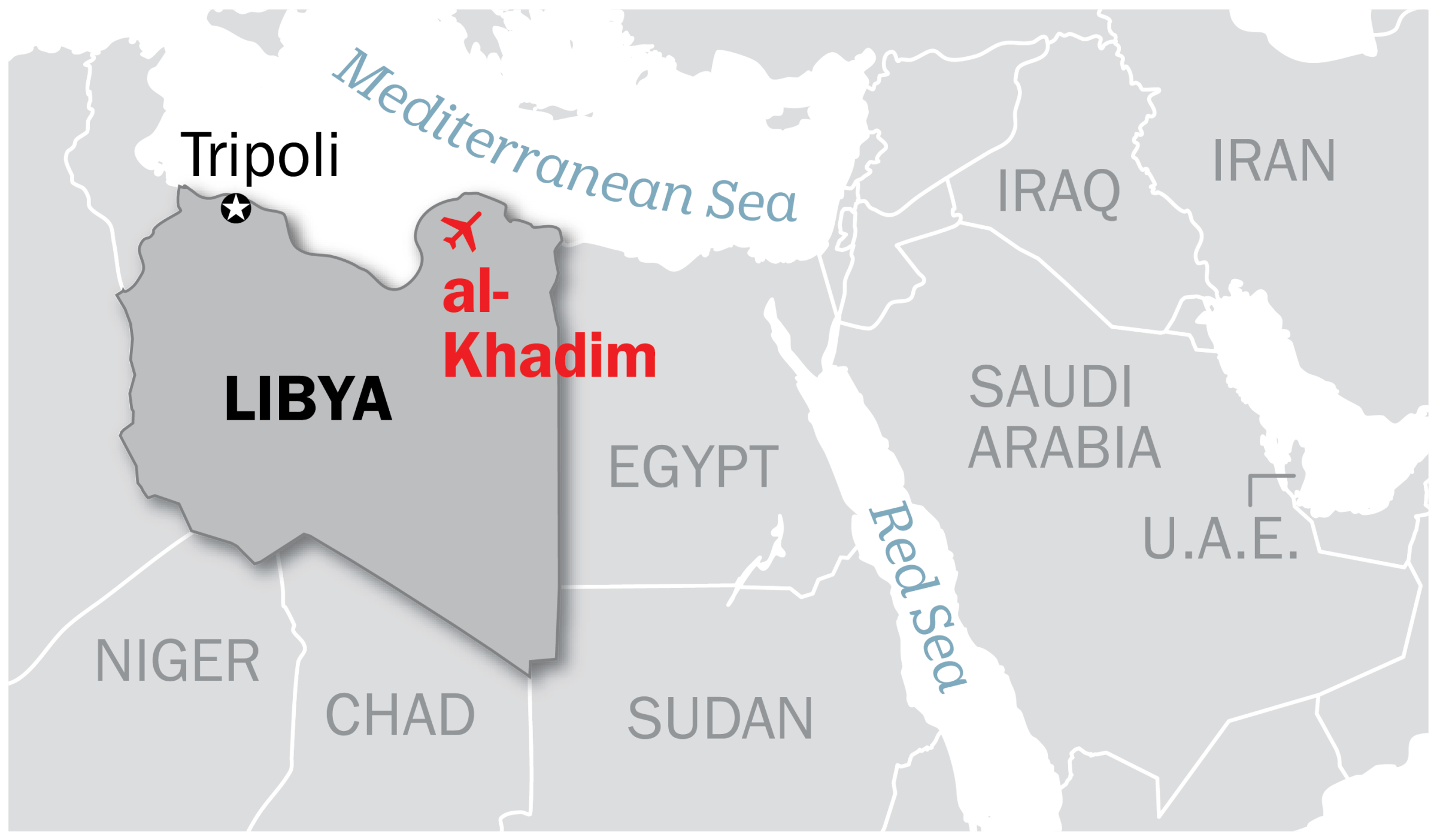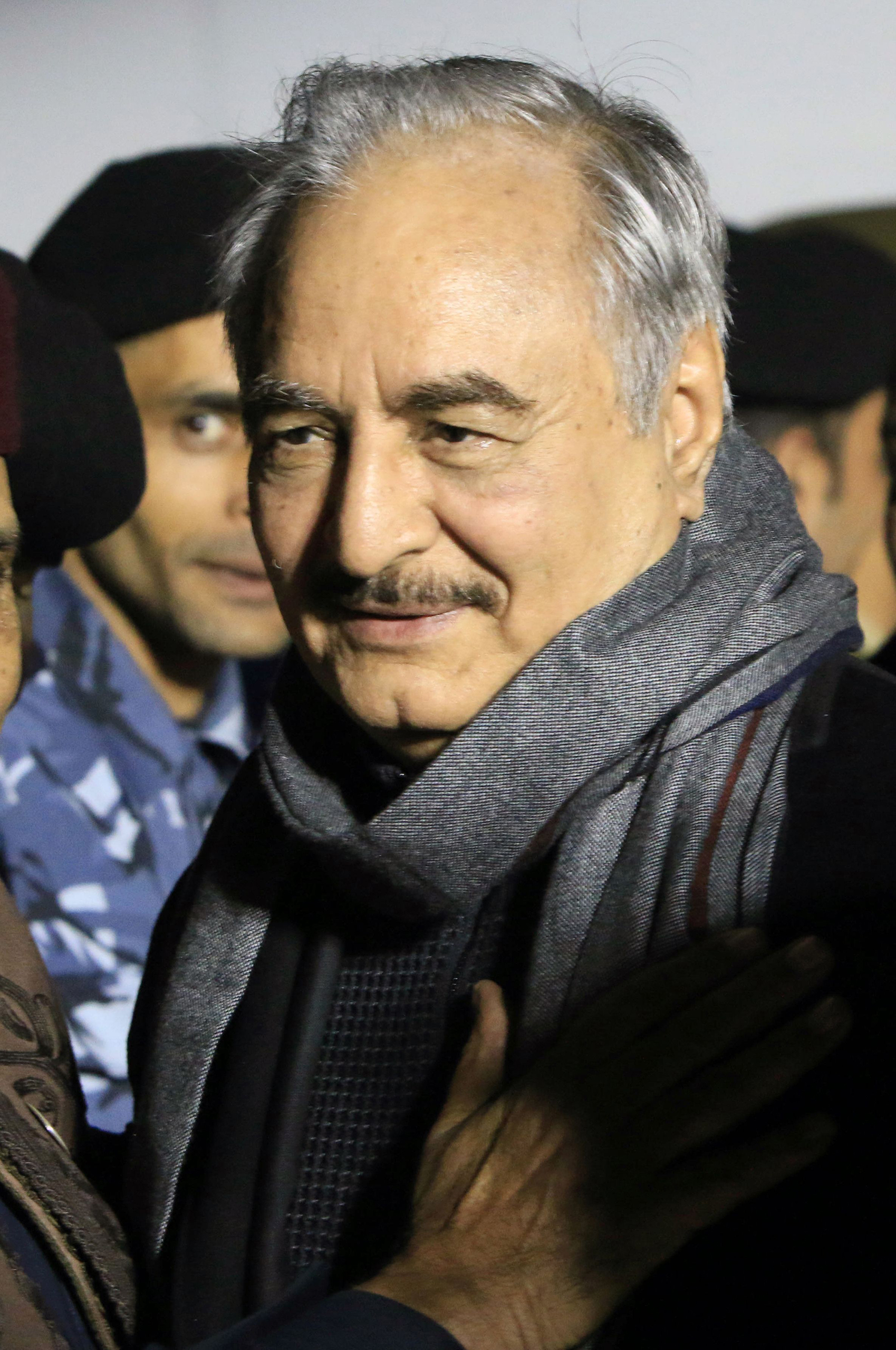
American military hardware is being used to undermine official U.S. policy in Libya, TIME has learned, as the United Arab Emirates has deployed warplanes manufactured in the U.S. in Libya in violation of a United Nations arms embargo.
At least six U.S.-made turboprop planes appear in satellite images of an airbase in eastern Libya, deployed in support of the forces of rogue Libyan general Khalifa Haftar, whose army is fighting the U.S. and U.N.-backed government located in Libya’s capital, Tripoli.
The planes offer fresh evidence of a clandestine proxy war in Libya, in which Egypt, the U.A.E., and Russia are siding with Haftar in a military campaign against forces allied with the U.N.-brokered government. Officials in Haftar’s camp accuse Turkey and Qatar of arming Islamist-leaning militias.
The flow of weapons helps sustain a conflict that leaves Libya mired in chaos and split among three rival governments more than six years after the popular revolt that led to the overthrow of Muammar Gaddafi in 2011.
Military support for Haftar’s forces could also complicate efforts to resolve the civil conflict through negotiations, efforts that the U.A.E. itself supports. In a diplomatic breakthrough last week, Haftar met the leader of the U.N.-backed government, Fayez al-Serraj, in Abu Dhabi. The rival leaders reportedly agreed on an outline of a deal to end the division between their governments, although no joint statement emerged from the summit.
The forces allied to the country’s two rival governments both command tiny air forces, and so the introduction of new warplanes could help tip the scales in a conflict where many of the fighters are armed only with aging assault rifles.
Archangels on the airfield
Libya is increasingly becoming a battlefield for a geopolitical contest among regional and international powers. Haftar frames his military campaign as a battle against Islamist “terrorists,” and the Emiratis share the general’s enmity toward the Muslim Brotherhood and related Islamist groups across the Middle East.
At the clandestine U.A.E. base in al-Khadim, eastern Libya, American-made warplanes are being deployed in direct violation of a U.N.-imposed embargo that bans all transfers of weapons to Libya unless explicitly granted an exception.
According to an official at an international organization working closely on Libya, the planes at the base appear to be Archangels, a specialized turboprop plane made by a North Carolina-based company called Iomax USA.
The American Archangel planes are an advanced iteration of an old concept that dates to the Vietnam War: crop-dusters that can be equipped with advanced surveillance gear and weapons. The plane’s slower speed and low flying altitude makes them ideal for patrolling borders and fighting insurgents at relatively close range. Iomax has sold 48 of the planes to the U.A.E. Federal records show that the company’s past clients include the U.S. Special Operations Command and the Drug Enforcement Administration.

Iomax CEO Ron Howard acknowledged to TIME in a phone interview that his company’s airplanes have been deployed in Libya. “The airplanes have been there, but it wasn’t airplanes we sold Libya,” he says. Asked if the aircraft had been sent there by the U.A.E., he said, “I would suspect that that’s probably who it is, yeah.”
Howard added that Libya’s former prime minister of Libya’s eastern, pro-Haftar government, Abdullah al-Thani, had approached him at the Dubai Air Show last December seeking to buy Archangels, but no deal was ever reached.
Satellite images taken in July 2016 and published in October by IHS Jane’s Defense Weekly show six fixed-wing aircraft and two Chinese-made drones sitting on a rudimentary airfield. Unpublished satellite images seen by TIME taken in December 2016 show that a substantial buildup took place in a span of just six months, including the addition of seven buildings, some of which are aircraft hangars. The images also show Russian-made Ilyushin Il-76 and Il-18 cargo planes, apparently used to fly in material used in the expansion of the base. The drones do not appear in the more recent images.
“You need a major operation to build up such capacities in such short time,” said an official at an international organization working closely on Libya, who spoke on the condition of anonymity.
The spokesman for Haftar’s self-styled Libyan National Army, Col. Ahmed al-Mismari, denied the existence of a U.A.E. military presence in an interview over Skype. However, the presence of the base was confirmed by other officials, including Rami el-Obeidi, the former intelligence chief for the National Transitional Council, the body that governed Libya in the immediate aftermath of Gaddafi’s downfall.
The warplanes could up the stakes in Libya’s civil war. The country is rich in small arms but poor in heavy weapons, thanks in part to the international arms embargo. The country is awash in AK-47s, rocket-propelled grenades and other light arms taken from the old regime’s stocks or smuggled across the country’s long desert borders.
It remains unclear whether the U.S. government was aware of the transfer of the planes to Libya at the time. When asked, a State Department official said, “As a matter of policy we decline to comment on the details of the Department’s interactions with individual private companies and foreign governments.” U.A.E. officials did not respond to inquiries from TIME.
The rogue general
A former ally of Gaddafi’s who later participated in a CIA-backed plot against the Libyan leader before settling into a 20-year exile in Virginia, General Khalifa Haftar is now one of the most powerful figures in Libya.
Casting himself as a savior aiming to rescue the country from chaos, he has won some public support for his military campaign, but his opponents regard him as a would-be dictator and blame him for the failure of the unity government brokered by the U.N. in 2015.

Over the last year, Haftar’s forces have succeeded in establishing control over Benghazi, Libya’s second city, as well as taking control of Libya’s key oil ports. After losing control of the ports in March, the LNA again reclaimed them following days of intense fighting. Haftar and his deputies also claim that they aim to capture Tripoli and reunite Libya by force, unseating the U.S.-backed government. Those statements alone are enough to fuel conflict with the general’s rivals, especially the powerful militias based in the city of Misrata.
“He still believes he is an emperor type of figure, and that is dangerous,” el-Obeidi, the Benghazi-based former intelligence chief, tells TIME. “The fact is this man is in denial of his own capabilities.”
Haftar is also expanding his sources of international support. In addition to Egypt and the U.A.E., he now counts Russia as an ally. In January, the 73-year-old general flew to a Russian aircraft carrier in the Mediterranean and participated in a videoconference with Russia’s defense minister.
On March 14, Reuters reported that Russia sent special forces to an airbase in western Egypt, eying a possible mission in Libya. The Russian ministry of defense denied the deployment, but in remarks reported the same day, Kremlin spokesman Dmitry Peskov said, “Russia is betting on him [Haftar] in the matter of settling the situation in Libya.”
U.S. officials have expressed alarm about the expansion of Russian influence in Libya, likening it to the Russian air campaign in support of the regime of Bashar Assad in Syria.
More Must-Reads from TIME
- Cybersecurity Experts Are Sounding the Alarm on DOGE
- Meet the 2025 Women of the Year
- The Harsh Truth About Disability Inclusion
- Why Do More Young Adults Have Cancer?
- Colman Domingo Leads With Radical Love
- How to Get Better at Doing Things Alone
- Michelle Zauner Stares Down the Darkness
Contact us at letters@time.com